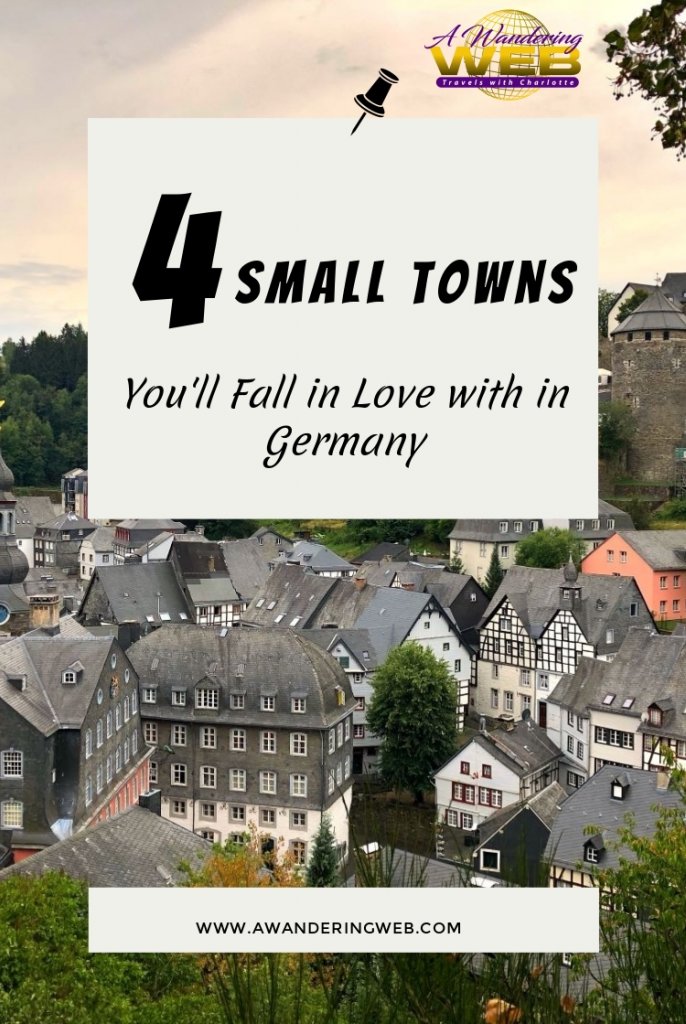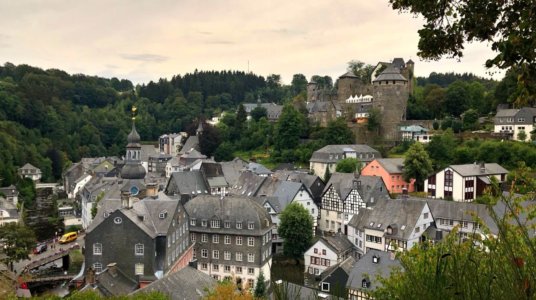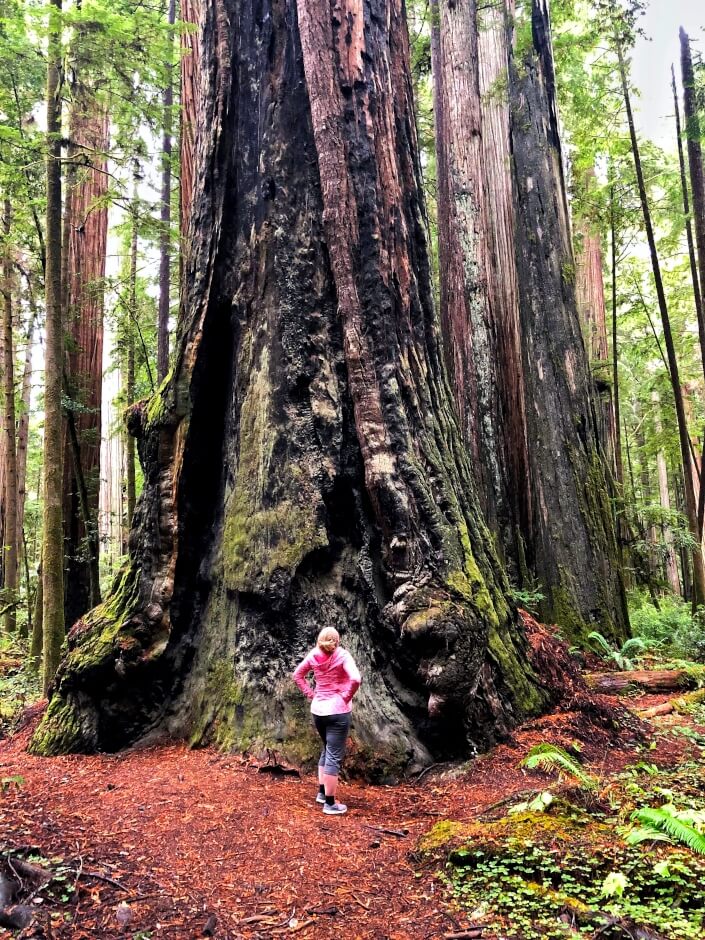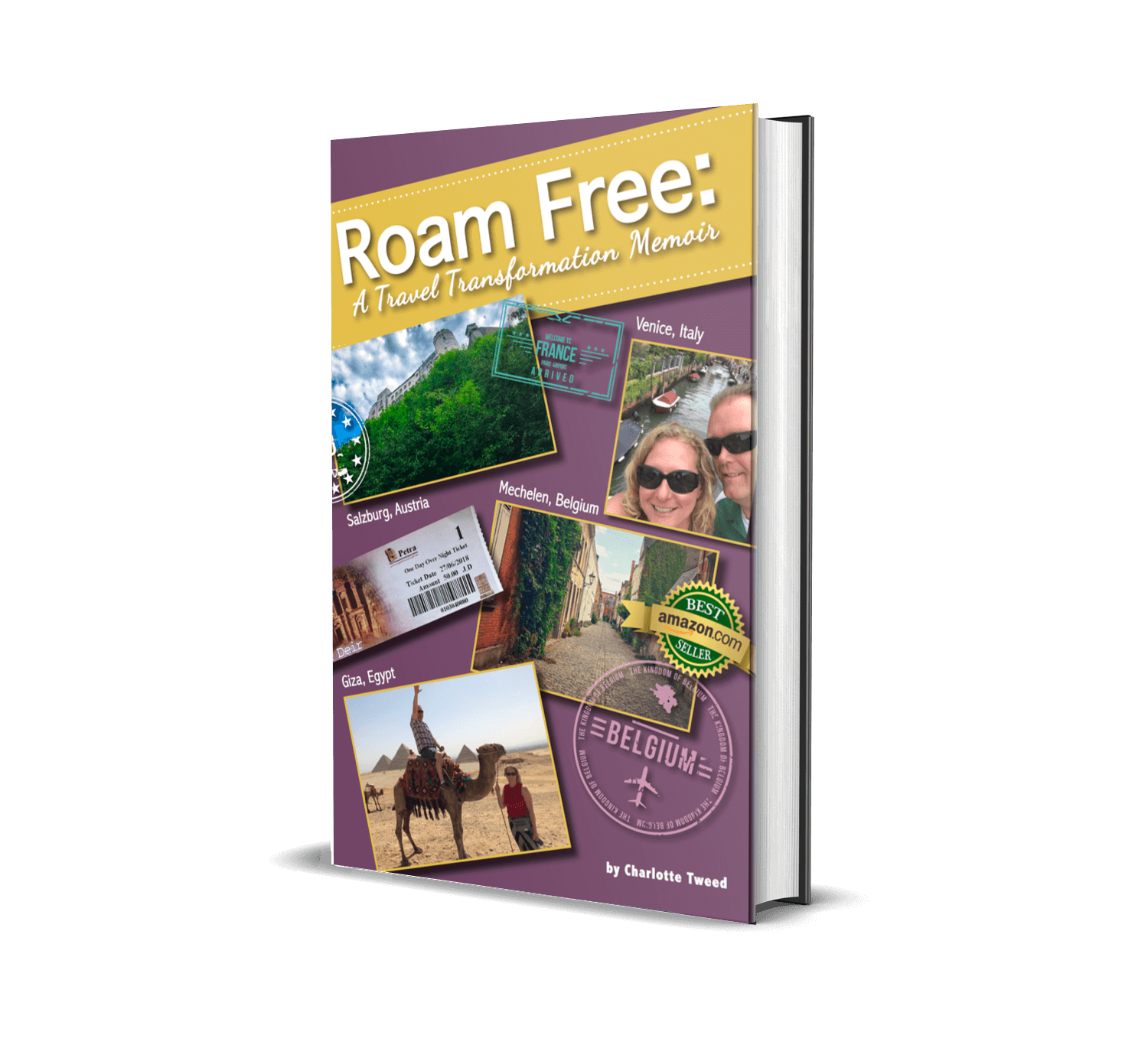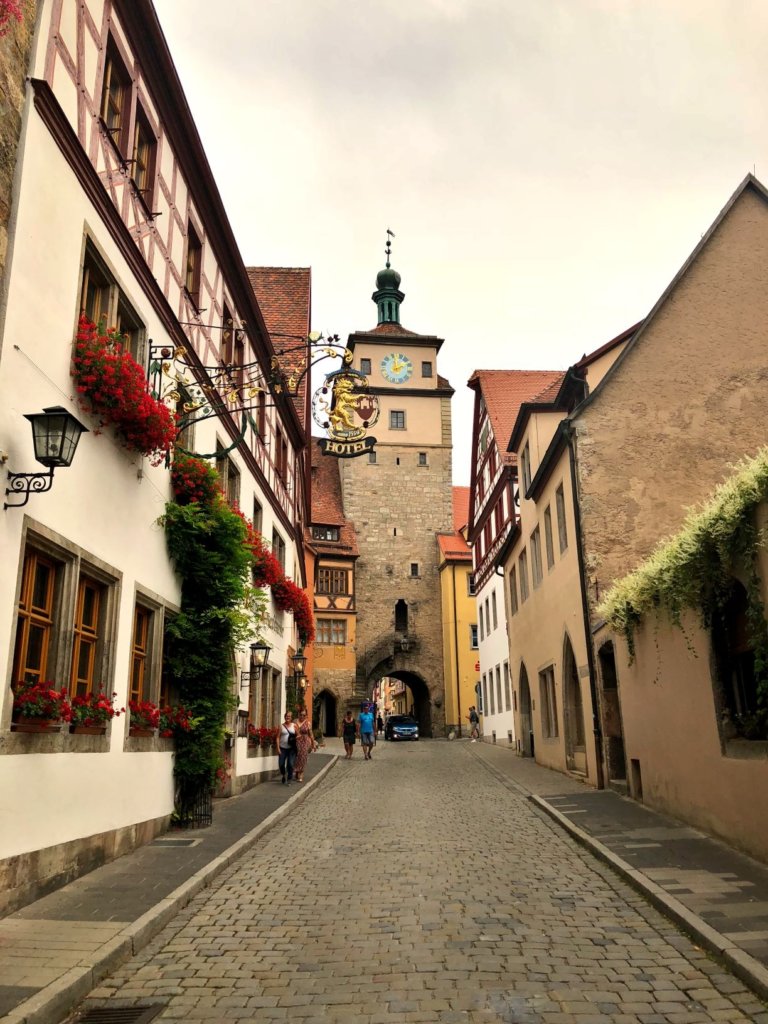
Germany has done a fantastic job of preserving its vast collection of medieval buildings. Fairytale towns dot the countryside like coloured sprinkles on a spiced cake. The Middle Ages and the Renaissance are brought to life before your eyes. According to 23 and Me, my ancestry is just south of Bavaria, Germany. Could my relatives have walked down the same streets of these fascinating small towns hundreds of years ago?
This post contains affiliate links. When you buy something through them I earn commission at no extra cost to you. The opinions are totally my own.
1. Rothenburg ob der Tauber
Rothenburg is one the finest preserved medieval towns in all of Europe. In the heart of Bavaria, Rothenburg is a part of the Romantic Road along a string of medieval cities and Roman ruins. Most importantly, walking the fairytale streets takes you back through thousands of years of history.
The Church of St. Jakob
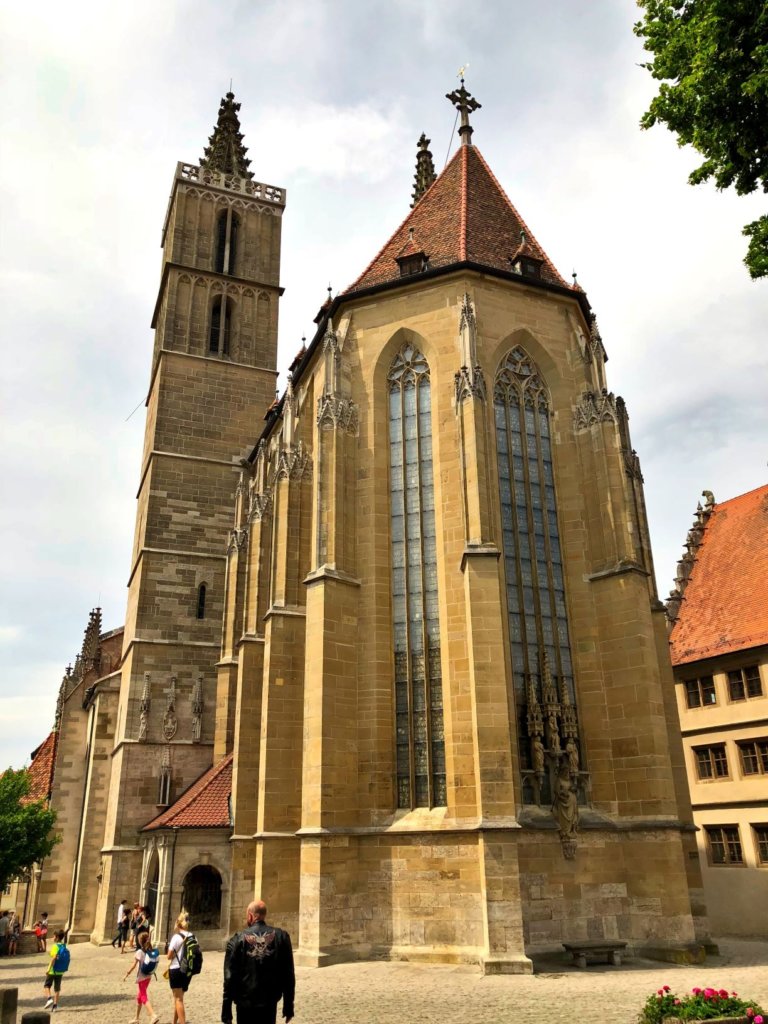
In the centre of town is the church of St. Jakob built between 1311-1485. The treasures inside are relics such as The Altar of the Holy Blood, The Twelve Apostles Altar and the 600-year old glass stained windows in the East choir area. All are an incredible sight to behold.
The Altar of the Holy Blood is a masterpiece carved by the famous Würzburg sculptor, Tilman Riemenschneider, between 1499 and 1505. The altar is located upstairs in the West gallery of the church. At the top of the altar is a rock crystal capsule that holds a sample of Christ’s blood. There is a small fee to enter the church to see the altar but it is worth it. We did see tourists enter the church and quickly snap a picture of the altar of the Twelve Apostles from a distance and then leave without paying the entrance fee, therefore missing the Altar of the Holy Blood.
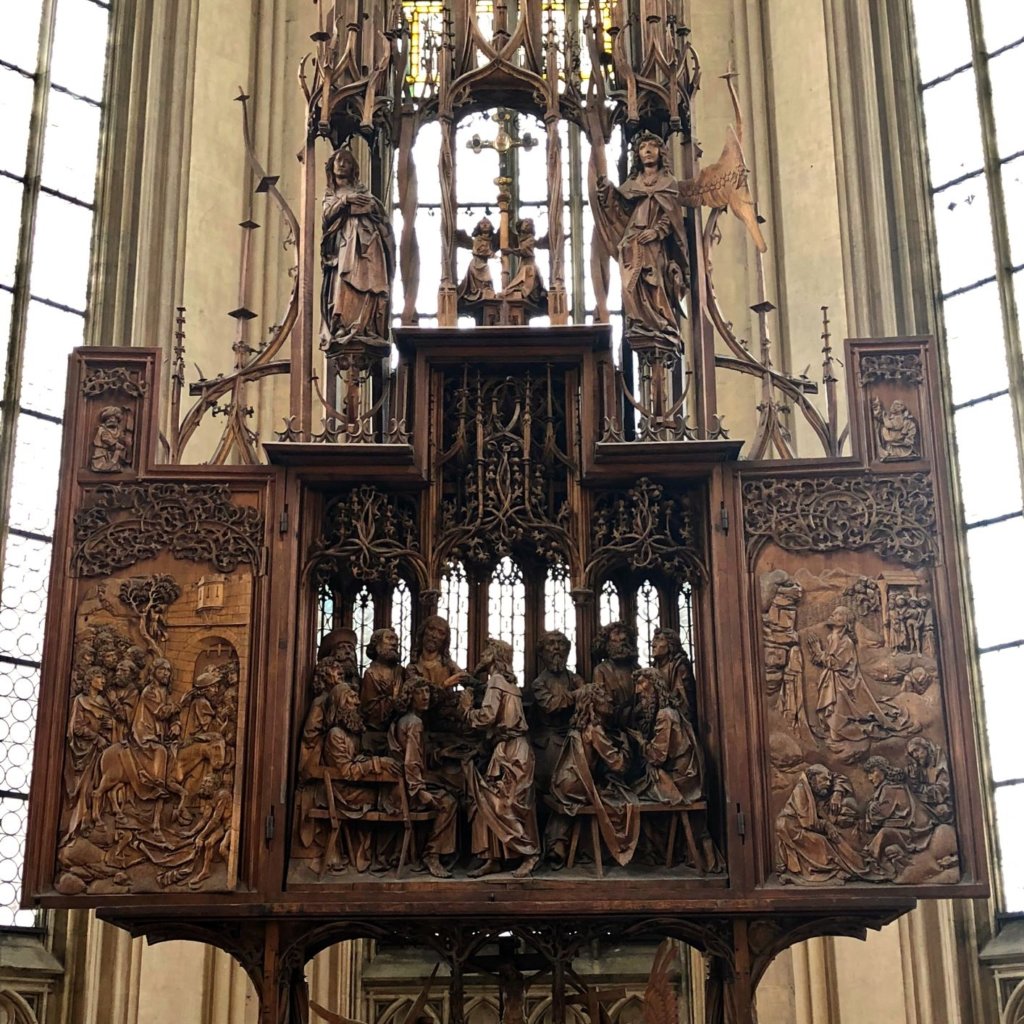
The Twelve Apostles Altar is the High Altar in the church. Considered one of the finest altars in all of Germany, the High Altar was completed in 1466. The wood carvings are the genius work of Swabian artists. Swabian master artists are an ethnic German people that are native to or have ancestral roots in the cultural and linguistic region of Swabia. Now the area is mostly divided between the modern states of Baden-Württemberg and Bavaria. On another personal side note, Swabia is the area of my ancestry. I happen to have carpenters in the family and those that love to work with their hands. The talent must be in the genes!
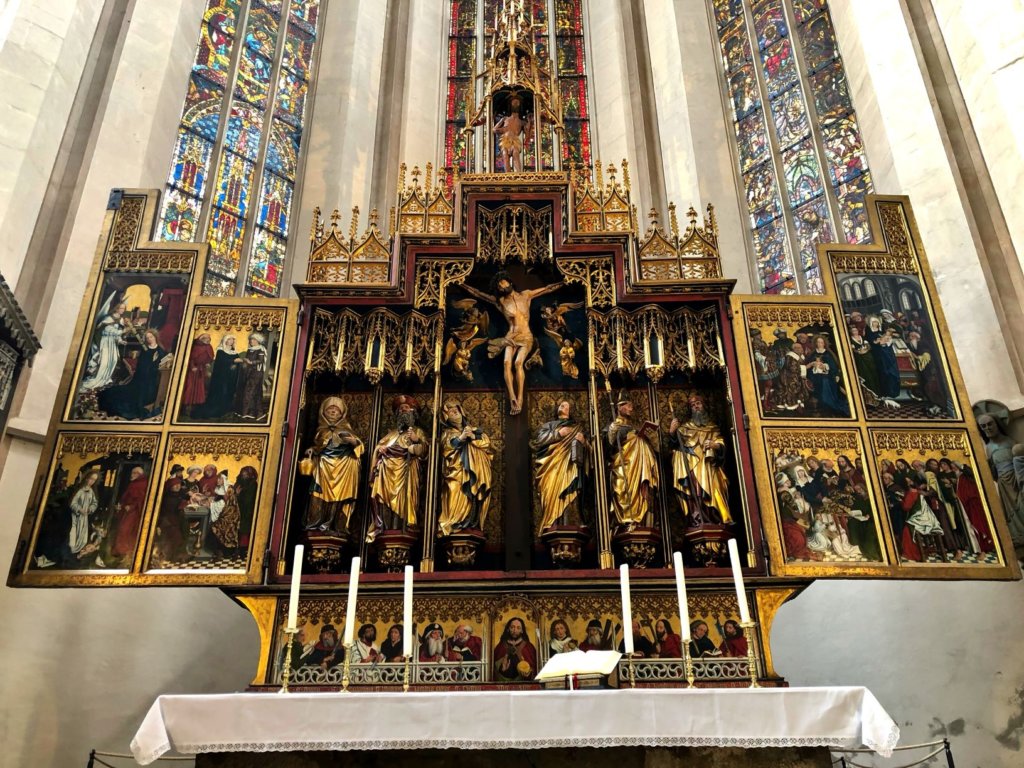
Where to Stay
Where to Go for Lunch
We stopped at Gasthof Butz for a delicious lunch. The restaurant is on a quiet side street with a delightful beer garden to enjoy a drink, linger and dine on fantastic food. I had the smoked salmon with pumpkin potato cakes accompanied by a salad and horseradish aioli. The meal was superb! The salmon was tender, like butter, and so fresh. The aioli was excellent, proposing temptation to eat the lemon it was served on.
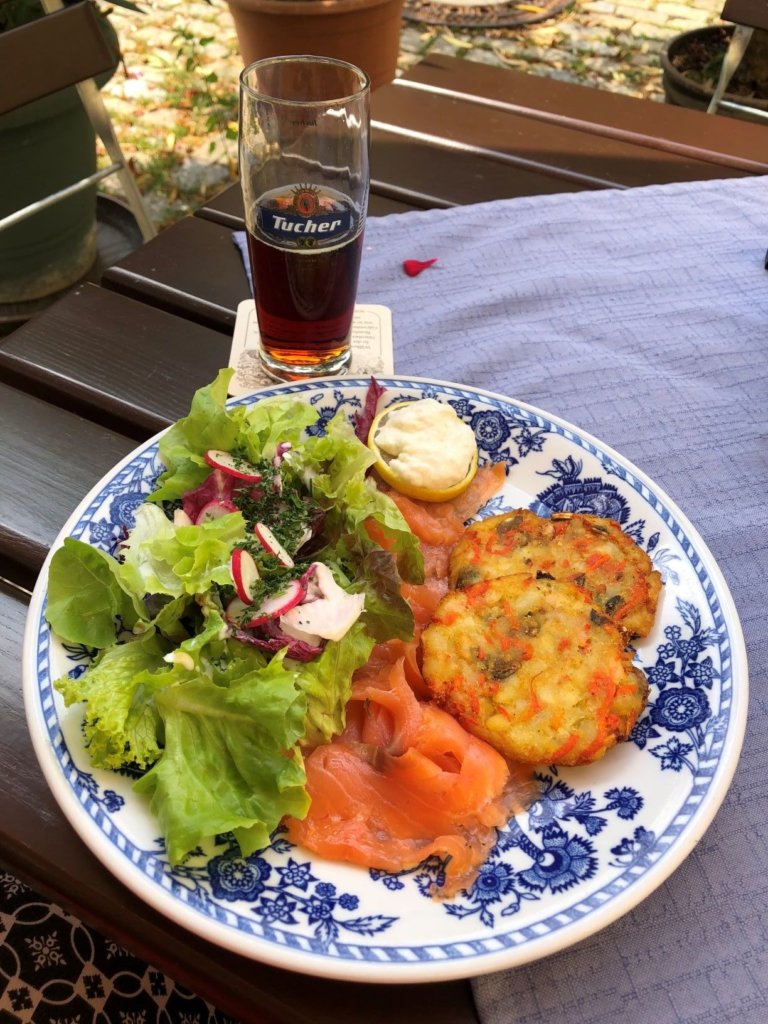
Gasthof Butz also serves as a family owned inn since 1894. Also located in the centre of the old town, the inn used to be a brewery until 1920. The six-pointed alchemist star outside the tavern door is a reminder of the old brewery tradition. Many people in medieval times could not read so this star would direct people to the brewery inside.
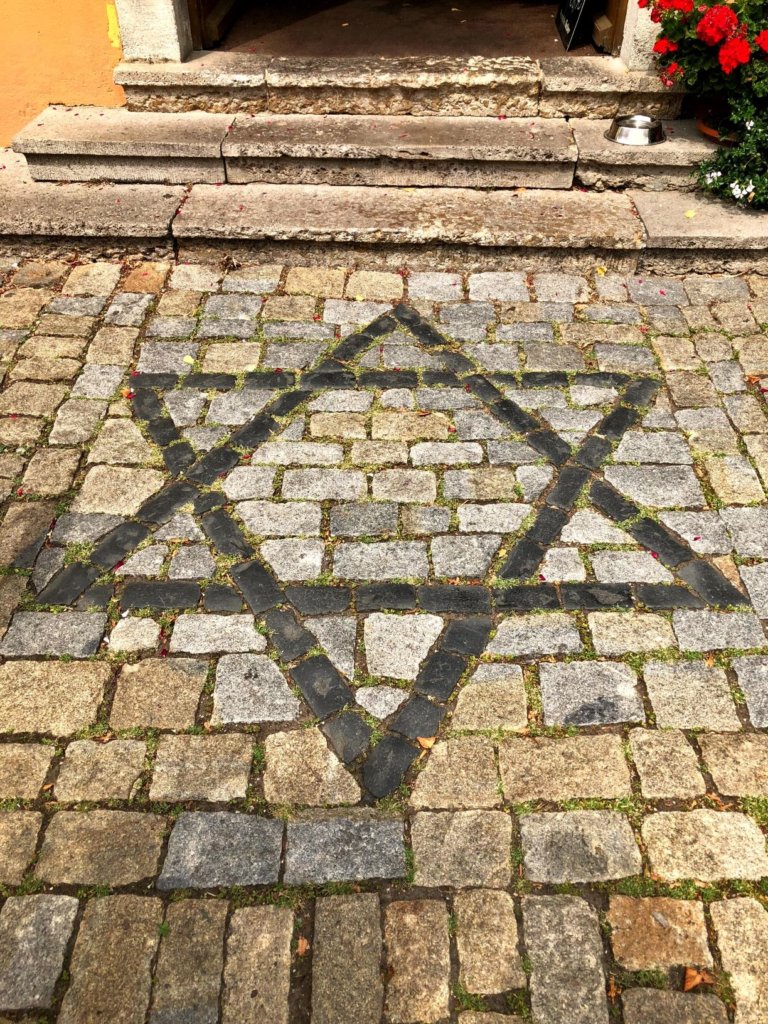
2. Monschau
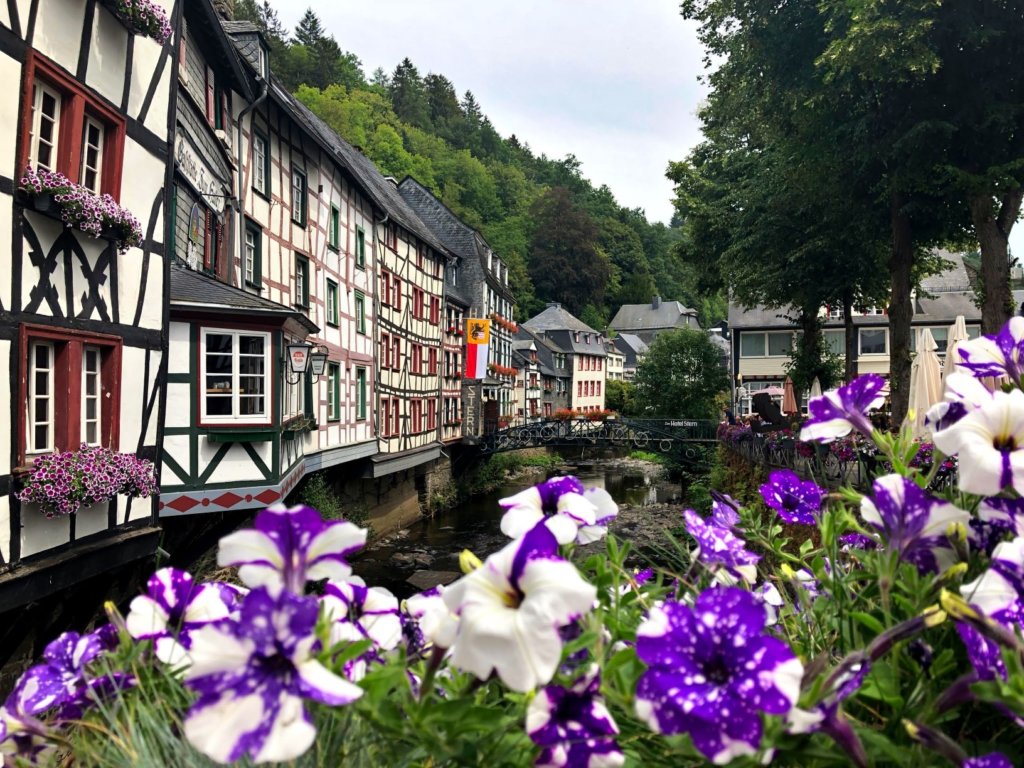
Monschau is a charming medieval town in western Germany near the Belgian border. It was here I finally had the indulgence of wiener schnitzel in Germany. Since childhood I had always wanted to go to Germany and eat wiener schnitzel. James Beard says, “Food is our common ground, a universal experience.” I have to agree.
Where to Stay
Where to Go for Lunch
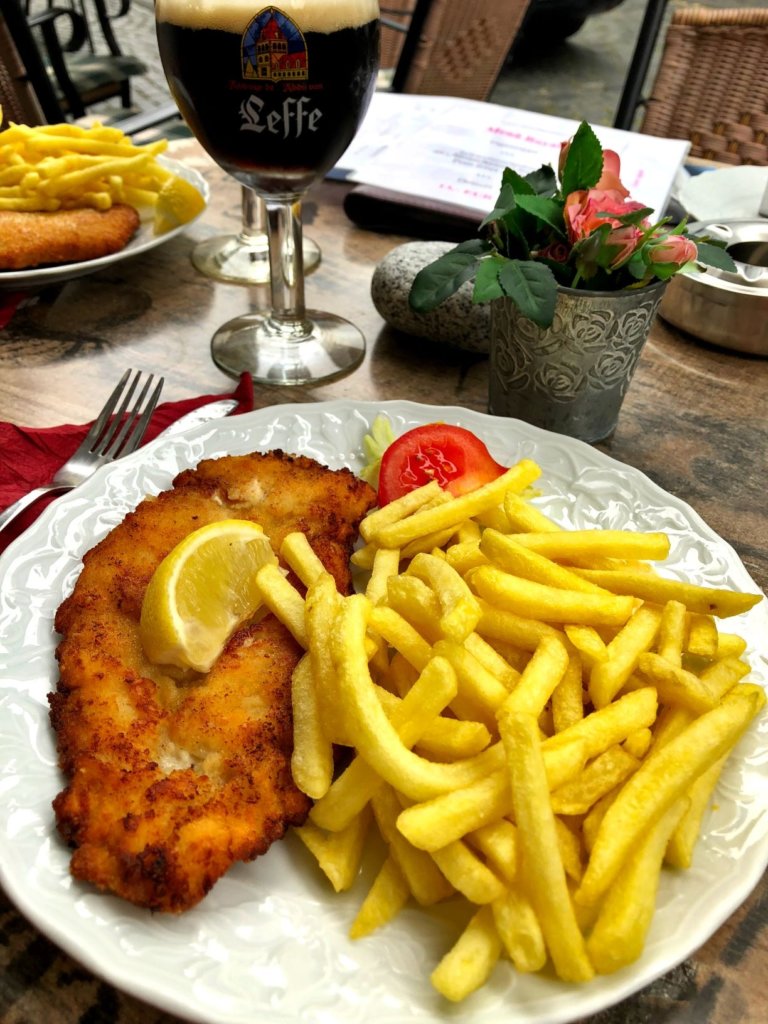
Monschau is known for its medieval town centre and half-timbered houses with narrow cobblestone streets. It is easy to navigate around the town and see all there is to see in a day. A pathway leads up to a lookout over the town near the old water wheel mill where you can get a great panoramic view. Looming over the town is the turreted Monschau Castle, which hosts open-air concerts. In addition, the town is located near Eifel National Park so there are other options for outdoor enthusiasts to extend their stay past a day trip to pretty Monschau.
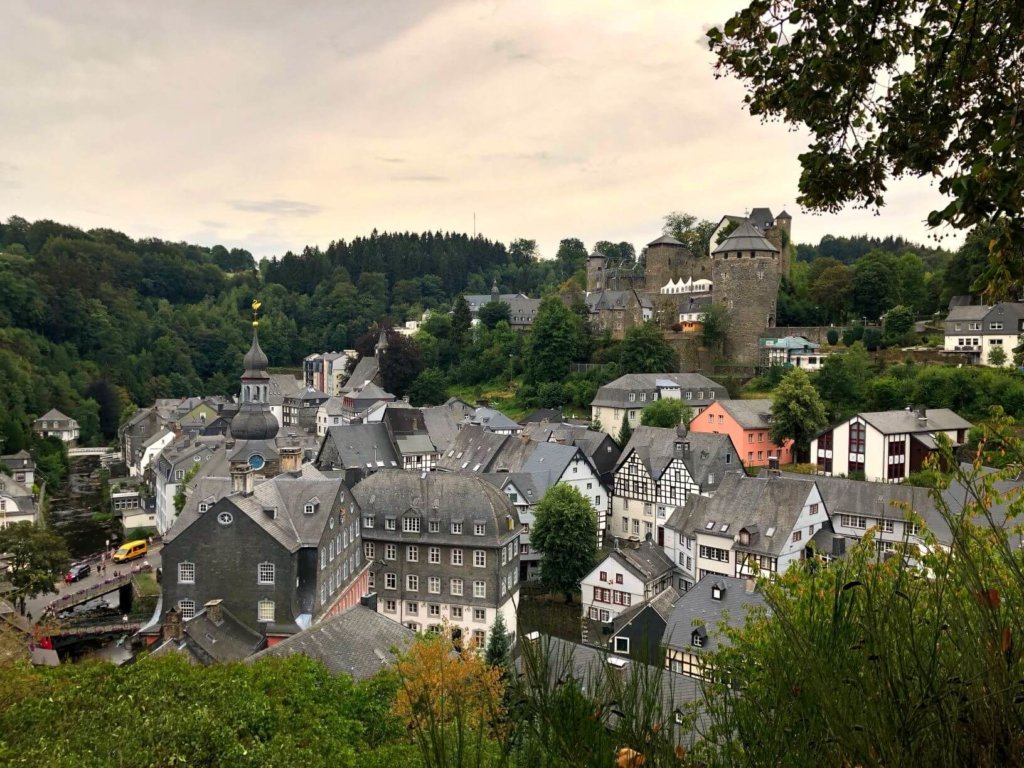
3. Lutherstadt Wittenberg
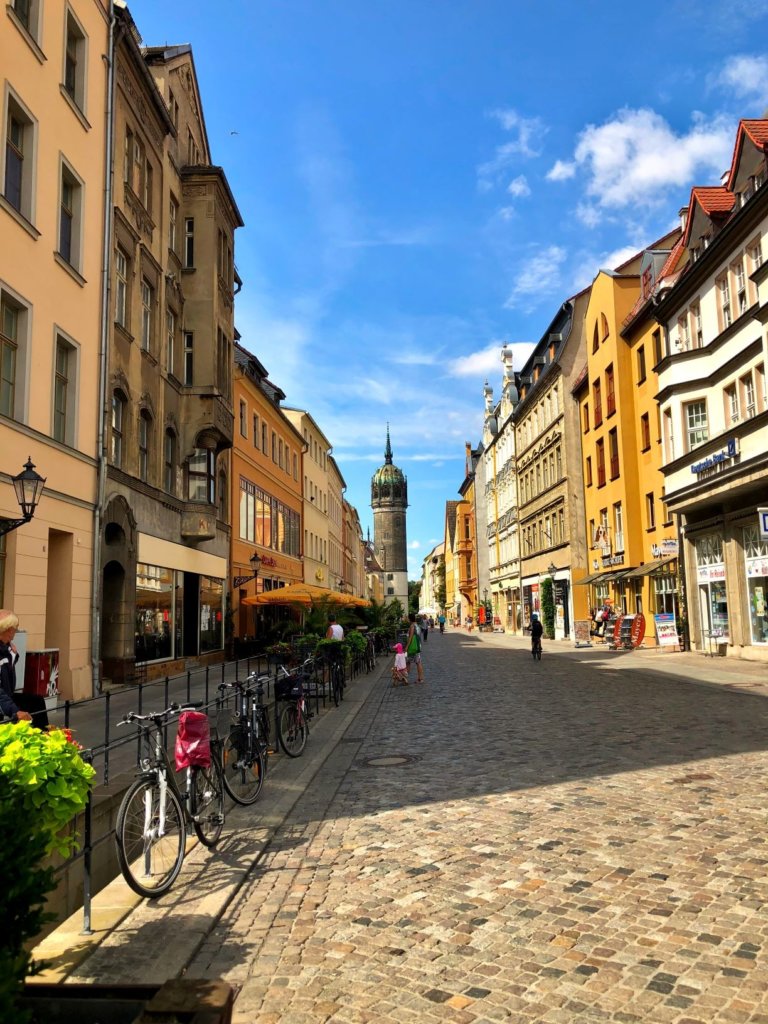
Lutherstadt Wittenberg is a university town in Saxony-Anhalt along the River Elbe in eastern Germany. Wittenberg is full of historical buildings of interest, particularly to those following the Lutheran doctrine of faith because the roots of the Reformation began here. The Marktplazt (Market Square) has been a UNESCO Heritage Site since 1996. There are many restaurants in the square to grab lunch and a wonderful bakery to have coffee and kuchen. If you feel you need a break from sausage and sauerkraut, stop at WittenBurger for a huge, scrumptious burger and a massive order of fries. The huge serving of fries is enough for two people to share.
Where to Stay
Where to Eat
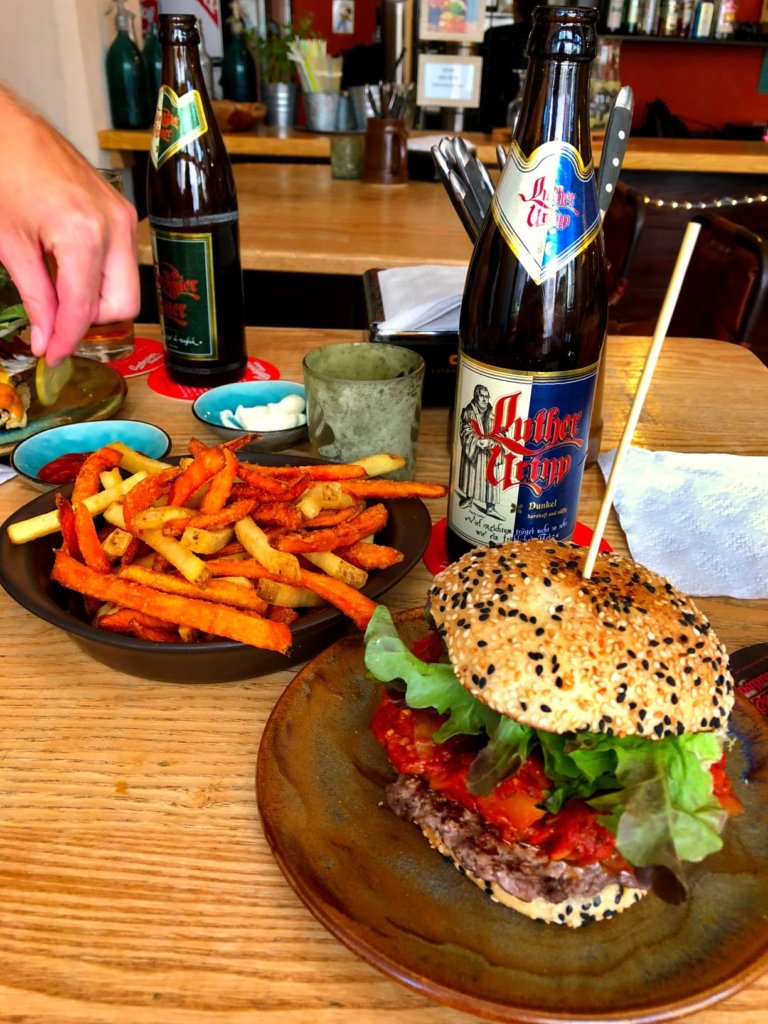

Small-Town Travel Tip: Park underground at the mall just off the Marktplatz. It is €3 for the day and you can walk to all the historic sites.
The Churches of Wittenberg
On the town’s main plaza, stands the 13th-century Stadtkirche St. Marien (The Town Church of St. Mary’s). Known as the Mother Church of the Reformation, this is where Martin Luther preached. The Gothic church is the oldest building in Wittenberg. The Town Church is Martin Luther’s home church where he baptized six of his children in the 500-year old baptismal font. Above the altar is the world-famous painting by Lucas Cranach portraying Luther’s rich Biblical theology.
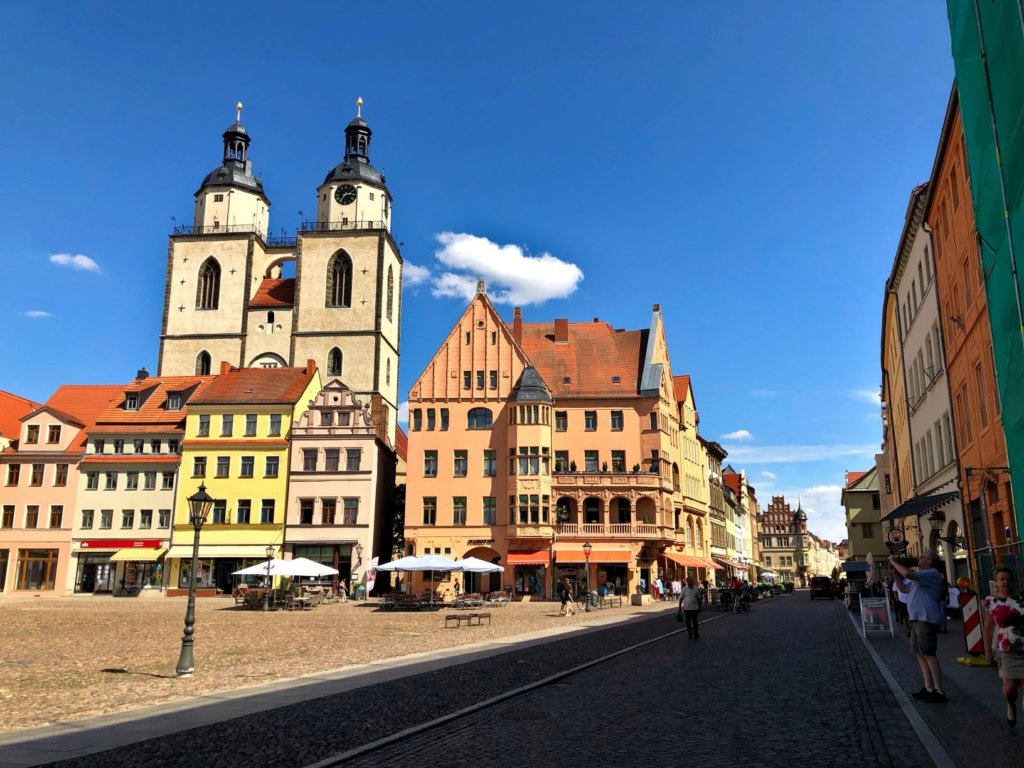
Kapele Corpus Christi (The Chapel of the Body of Christ) is right next to the Town Church. This quaint church is tiny and it is here where Luther performed small weddings, baptisms and funerals. English services are held on Wednesday and Fridays at 3:00 pm from the end of April until the beginning of November.

Schlosskirche (The Castle Church), built in 1500, is where the Protestant Reformation began. Martin Luther nailed his 95 Theses on the wooden door of the church. The original door was destroyed in a fire. Now, bronze doors with the 95 Theses printed on them bring testament to Luther’s challenge to the Catholic church. Inside are the statues of the many notable figures from the Reformation period. Luther’s tomb is inside underneath the main pulpit. English services are held in this church by the Wittenberg English Ministry (WEM).
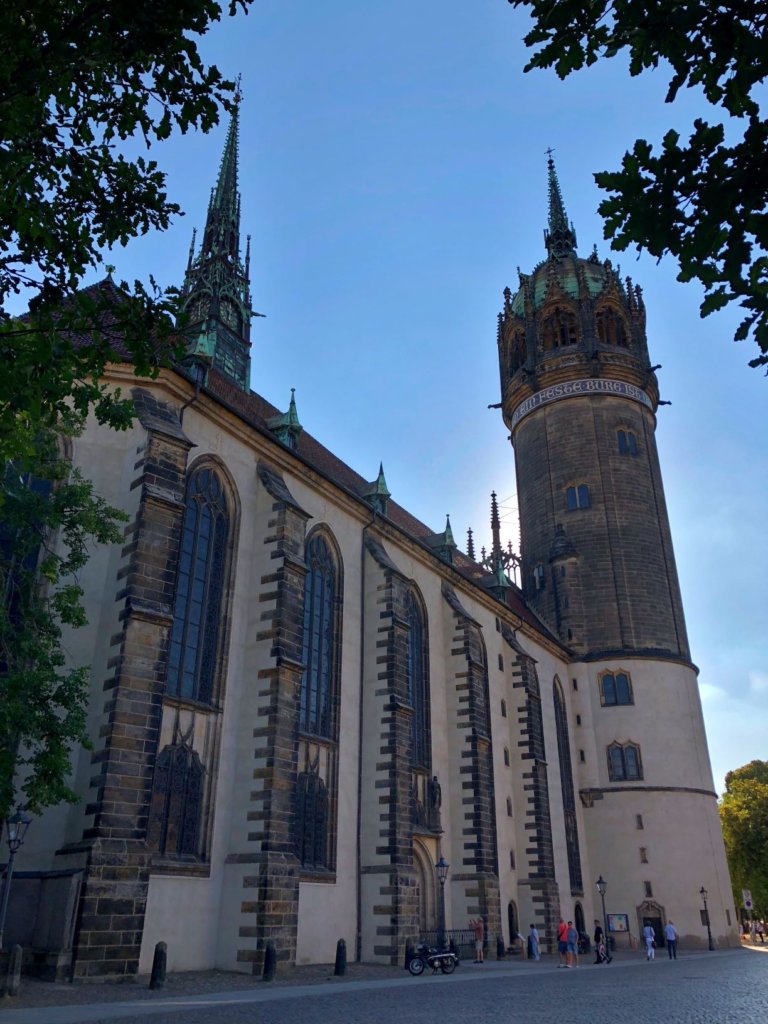
The Visitor Information centre right outside the church has detailed maps of the historical buildings throughout the town. Also, you can get information on various English-speaking services held regularly in the different churches in Wittenberg.
Historical Buildings
Lutherhaus Museum is where Martin Luther lived from 1508-1546. The house, originally used as a house for Augustinian hermits, was built in 1504. Converted into a museum in 1883, Lutherhaus is now dedicated to the history of the Reformation.

Melanchthonhaus is a stop on the walk to Lutherhaus from the Marktplatz. Built in 1536, this is the former home of Luther’s friend and fellow Reformer, Philip Melanchthon. This medieval home is now a museum. This Renaissance house stands out as an architectural marvel on the street.

Alaris Butterfly Park
An unexpected delight in Wittenberg was the Alaris Butterfly Park. Located at Pfaffengasse 8, 06886 Lutherstadt Wittenberg, this tremendous tropical greenhouse gives refuge to 140 different species of butterflies. I could have stayed all day to discover the butterflies. Every moment was one of relaxation, excitement and wonder. You never know what you are going to see next, what flickering moment of beauty is going to pass by your eyes. Have patience. Some of the most stunning butterflies don’t move for a long time. You may see the inside of their wings in a brief, glory-filled flash. Unwind. Sit. Retreat. Discover different species of these beautiful creatures as they flutter-by.

The People of Wittenburg
We were greeted warmly by the volunteers of WEM at three different services we attended. Likewise, they invited us to Stammtisch on Thursday evening. A Stammtisch is an informal group meeting held on a regular basis. The group usually meets around large, round tables. At this particular Stammtisch, the WEM group met with local Germans where they would practice their English, enjoy food and drink. Sadly, we had to miss the event because we left Wittenberg that morning due to plans we could not cancel.
Our host in Wittenburg was forthright in sharing local information on things to see and do. Curiosity about our life in Canada was evident. He often teased us about the French car we were driving. In one conversation, he inquired about the speed limit in Canada and scoffed when we said it was 110 km per hour. For those of you that don’t know, the Autobahn is German’s highway that has no speed limit, unless posted. Our French SUV had a hard time keeping up at 140 km per hour in the middle lane. The fast lane is on the left and cars blew by us like we were but a speck of dust on the road.
4. Waldeck
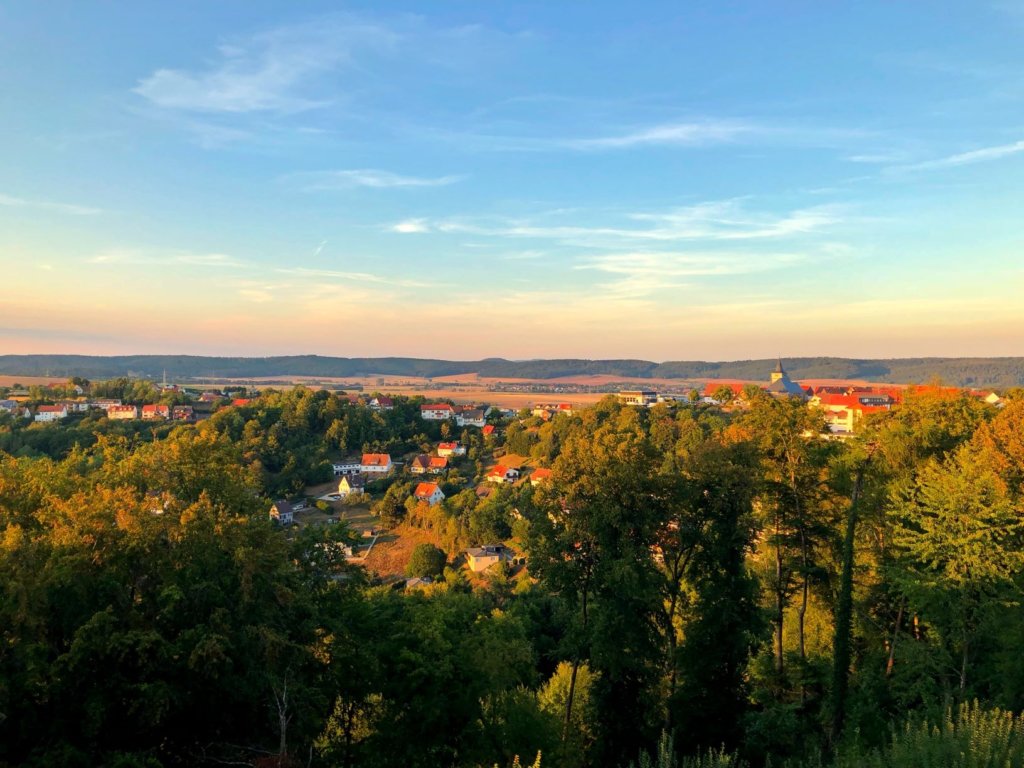
Nestled in the rolling hills of Hesse, Germany is Waldeck, a small town in the Waldeck-Frankenberg district. With a population of just over 7,000, this small community is off the beaten path of touristy towns. Waldeck bears a personal connection that you can read about here. Peace and quiet await with striking views of the German countryside from biergartens perched at the top of the town.
The town is comprised of an upper and lower area. The lower part of Waldeck is almost entirely residential. In contrast, the upper part located on the top of the hill is where the restaurants, main street and shops are located.
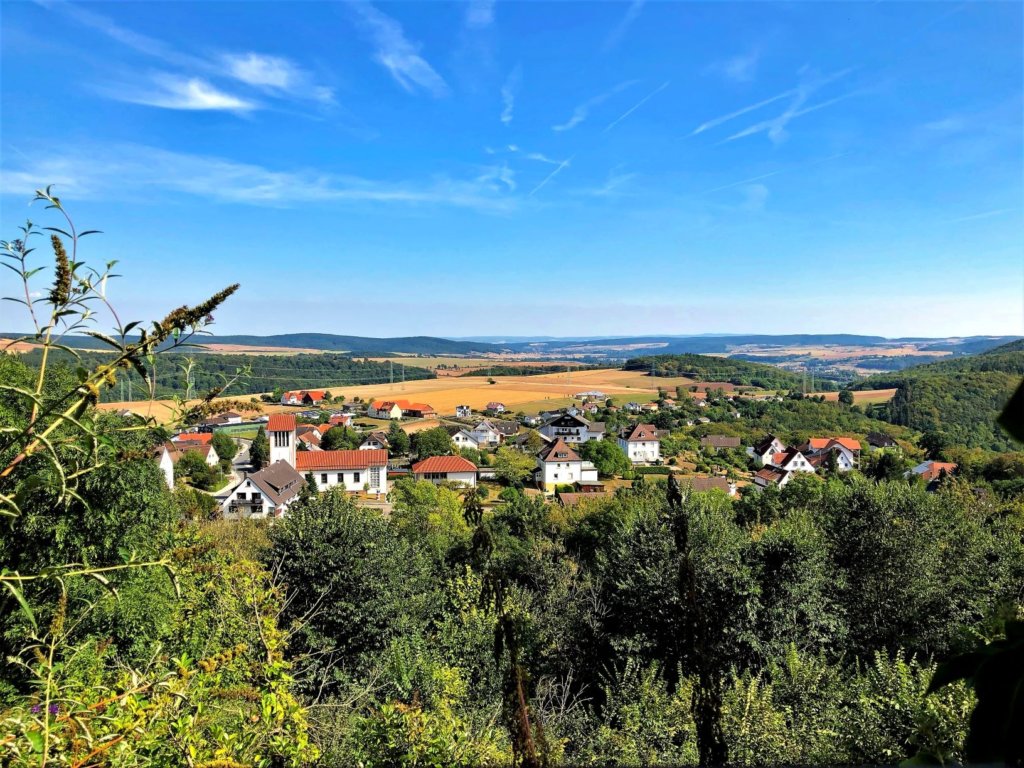
Where to Stay
If you have always wanted to stay overnight in a castle, Schloss Waldeck comes highly recommended. This 4-star hotel has had many functions in the past. The rooms are incredibly spacious and reasonably priced. There are restaurants at the castle as well as a torture museum from medieval times.
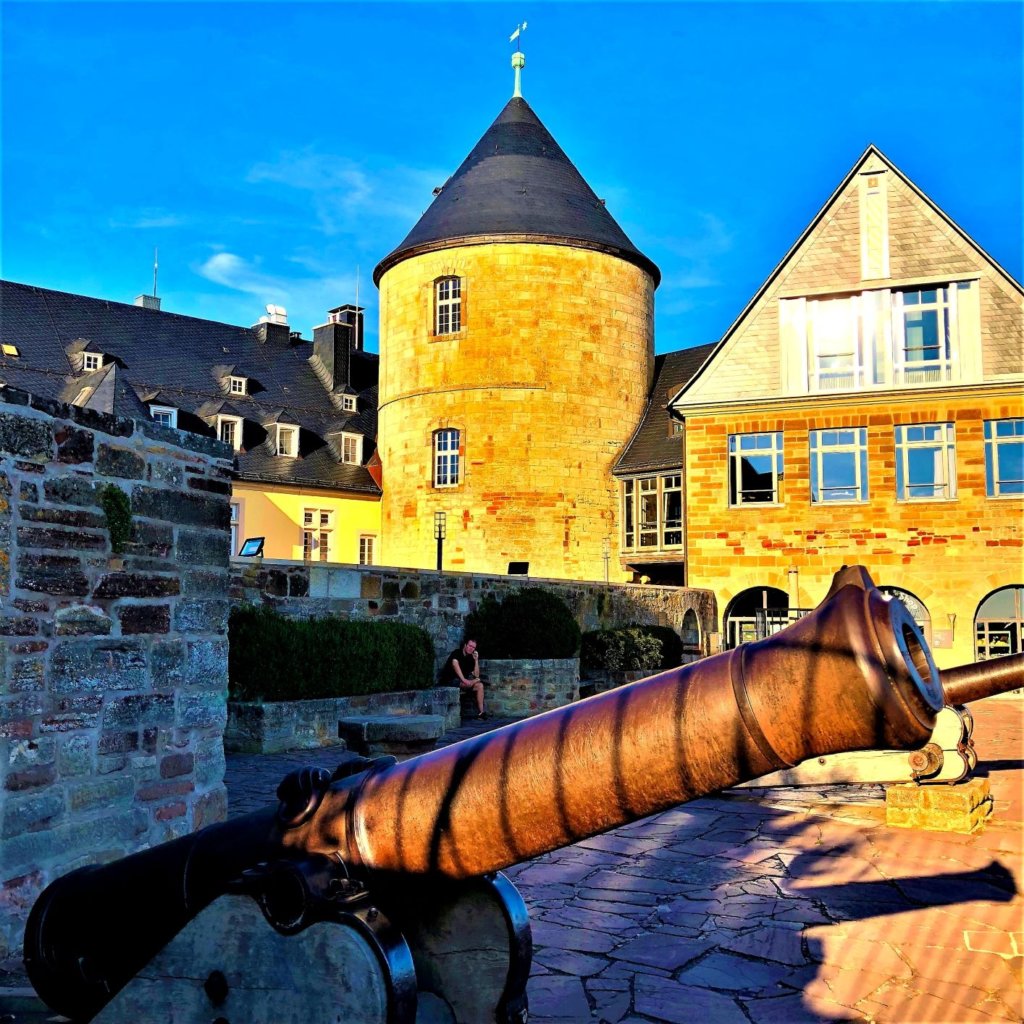
Germany: An Extraordinary Destination
Germany is accessible, clean and organized. Cultural riches and architectural landmarks abound. Germany’s important role played in Europe’s history is reflected in many of its attractions. The people are friendly and the food is wonderful and hearty. Consequently, Germany is a favourite destination because it has everything; fascinating history, grand scenery (especially in Bavaria), and pleasing culinary delights. Additionally, the countryside is full of countless, magical small towns to discover. Small towns that offer the ability to interact with locals on an intimate basis.
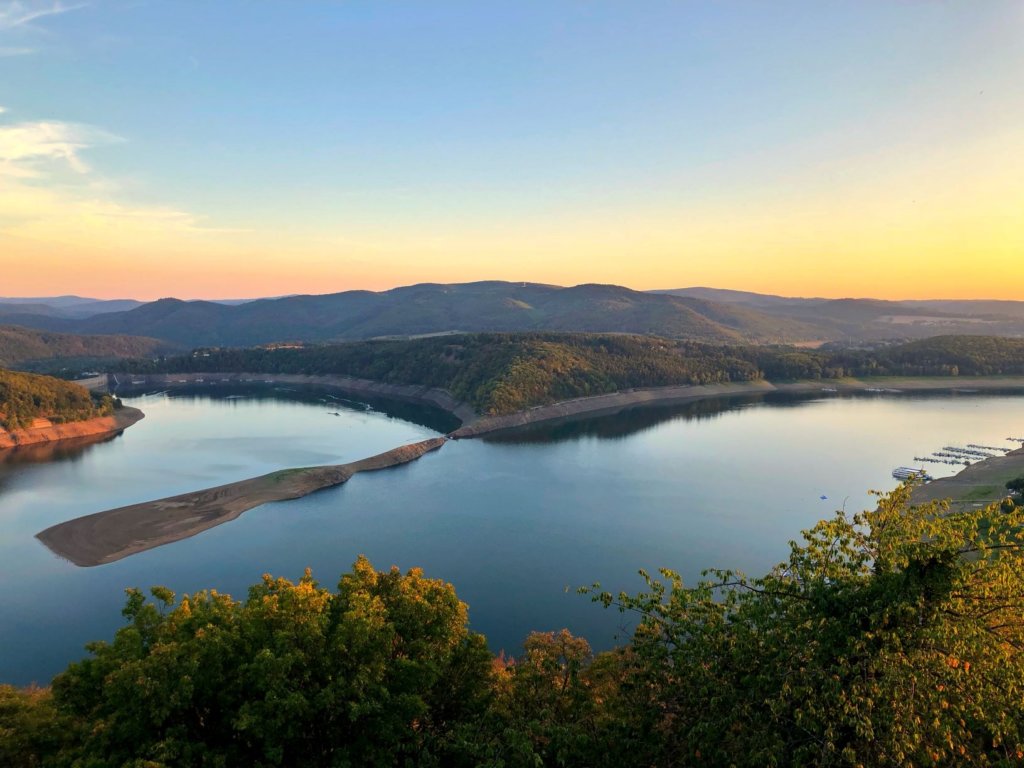
All pictures in this post are taken by Charlotte, yours truly, as always, unless otherwise stated.
Roam Free is a deeply personal and often hilarious travel memoir that pulls you in to the wild and woolly ride of my epic travel adventures. If you loved Peter Mayle’s A Year in Provence, you’ll delight in Roam Free’s sweetly innocent deep dive into a life of untethered long-term travel. Get your copy on Amazon and become inspired today.
“I just finished your book and I wrote a great review on Amazon. Congratulations on your book, your blogging career, and mostly on your courage to step out of the box then burn the damn box!! Your book is inspiring. Bravo.” – Irene Cabay
Get Your Custom-Built Itinerary:
Want to make your own adventure travel memories but don’t know where to start? A Wandering Web Travels can help you plan and book your bucket list travel today.
Enter for your chance to win a FREE trip! *Terms and conditions apply.*
Book Your Flight and Car Rental:
Find cheap transportation by using Kiwi.com. This search engine combs websites and airlines around the globe to become the ultimate travel hack.
Book Your Accommodation:
You can book hotels, apartments, resorts, villas, B&Bs and guest houses at Booking.com! They consistently return the most economical rates for guesthouses and cheap hotels.
Like surprises? Try Hotwire.com and Save up to 60% off 4+ Star Hot Rate Hotels!
Always been curious about Airbnb but afraid to try? Now you can check them out and earn up to $62 CAD off your first trip!
Check out our world recommendations page on Where to Stay!
Book Your Small-Group Tour, Activities and Attractions:
For the best small-group tours check out G Adventures’ Insanely affordable tours!
Viator is another great option so don’t miss out! Guaranteed lowest prices on tours and activities.
Don’t Forget Travel Insurance:
Travel insurance will protect you against illness, injury, theft, and cancellations. It’s comprehensive protection in case anything goes wrong. We like World Nomads because they have great rates and cover a range of adventurous activities.
P.S. – If you’ve found our website helpful and like to book travel yourself, please consider booking your next trip through the links on our Resources Page. We have personally used the companies listed there in our own travels. By booking through these links, the small commission we earn helps us keep the content up to date, expand our resources, and keep the website community supported.
Mission statement: Transform your life with travel—one destination, one adventure, one story at a time.
